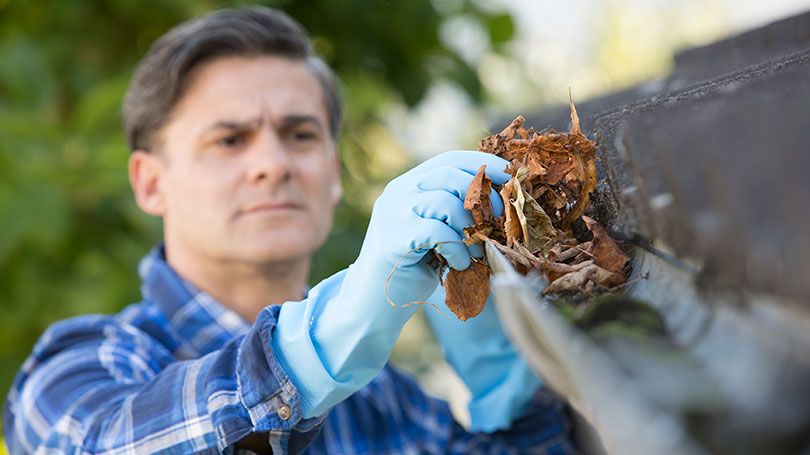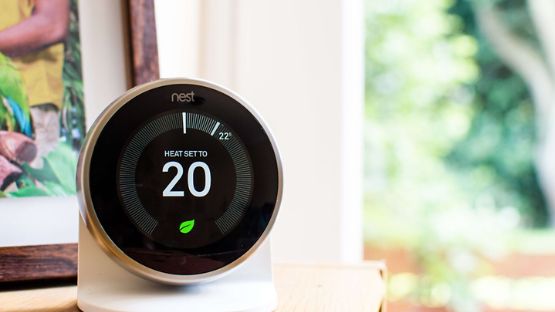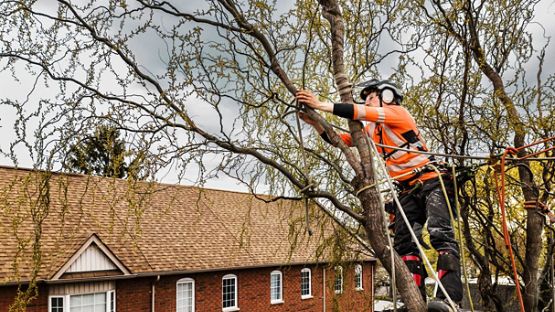As spring arrives, Canadian homeowners, condo dwellers and renters are ready to put the winter months behind them and prepare their homes for the warmer weather ahead.
Whether you own a home, a condo or rent, following a spring home checklist to tackle home repairs and maintenance can help you prevent costly repairs, improve energy efficiency and protect your property value.
Key takeaways
- Regular home maintenance helps catch small issues early, preventing them from turning into major problems that could lead to expensive repairs or even insurance claims. Staying proactive protects your home and your wallet.
- Whether you live in a condo, house or rental, spring home maintenance is important. However, responsibilities may vary. Condo owners may have support from their strata or condo corporation, while renters should inform landlords of any issues requiring attention.
- Spring maintenance doesn’t need to be overwhelming. Spread tasks out over a few weekends and follow a maintenance schedule to keep things manageable and affordable. Small steps over time make a big difference.
Why you need a spring home maintenance checklist
In Canada, cold weather and winter hazards can take a toll on homes, leaving behind melting snow, debris and potential damage from storms and other extreme weather conditions.
By following a maintenance checklist, you can address issues early before they become bigger problems. Whether you’re dealing with clogged gutters, leaky basement windows or a worn-out roof deck, taking the time to handle repairs now will save you from headaches later.
Your ten-step spring maintenance checklist
Your maintenance checklist will look different depending on whether you own a home or a condo. Condo owners may find that some tasks, like exterior upkeep or common areas, are covered by the condo corporation or strata board.
For renters, structural maintenance is usually the landlord’s responsibility, but it’s important to notify them of problems like leaks or electrical issues so they can address them promptly. While landlords may address some issues – it helps when tenants also maintain a clean indoor space.
No matter your living situation, staying on top of maintenance is key to keeping your space safe and functional.
1. Inspect your roof, chimney and gutters
One of the most important tasks on any spring checklist is checking your roof, chimney and gutters. Canadian winters can be rough on roofing materials, and clogged gutters can lead to water seepage and foundation damage, particularly during the spring thaw.
- Have your roof inspected for missing shingles, leaks or visible damage. Pay close attention to areas where ice or snow may have built up.
- Have your gutters and downsprouts cleaned out to ensure proper water flow. Blocked gutters can cause water to pool near the foundation, leading to leaks or even cracking.
- Check for any water stains on ceilings or walls, which could indicate a leaky roof.
2. Check windows and doors
Maintaining your home’s energy efficiency begins with ensuring your doors and windows are properly sealed. Just as is recommended during fall maintenance, now is a good time to survey for any new damage:
- Inspect weather stripping around windows and doors and replace any that’s worn or damaged. This will help keep your home cool during the warm weather and reduce the strain on your air conditioning system.
- Wash windows to remove dirt and grime built up over the winter. For higher windows, consider hiring professionals.
- Test all window screens and screen doors to ensure they’re free of tears and function properly.
- Pay attention to basement windows, which often face more exposure to moisture and freezing temperatures.
3. Inspect your foundation and basement for cracks
Winter can be especially hard on your home’s foundation. As melting snow and fluctuating temperatures cause soil to expand and contract, new cracks may develop in your foundation or basement windows.
- Have your foundation inspected for cracks or signs of foundation damage. Small cracks might seem harmless, but over time, they can expand and lead to bigger issues. Consider having a foundation specialist evaluate any significant cracks, as these could be early signs of larger structural problems.
- Look for water stains, mould or damp areas inside your basement; they could indicate water seeping in through cracks.
4. Inspect plumbing for leaks and damage
Winter can also be harsh on plumbing systems, especially exposed pipes that may freeze. Start by checking for leaks and signs of damage.
- Inspect outdoor faucets for any cracks or leaks caused by freezing.
- Indoors, look for water damage around sinks and toilets, particularly under the kitchen and bathroom cabinets.
- Check the water heater for leaks and make sure it’s functioning efficiently.
- Test your sump pump to ensure it’s functioning, especially if you have a basement prone to flooding. Regularly checking the sump pump can protect your home from water damage during the spring thaw.
5. Test smoke alarms and carbon monoxide detectors
Protecting your home from fire should always be a priority and testing your home’s safety equipment is a vital part of your home maintenance checklist.
- Replace the batteries in all smoke alarms and carbon monoxide detectors
- Press the test button to make sure they are functioning
- Consider placing additional fire extinguishers in high-risk areas, such as the kitchen or near the furnace
6. Service your air conditioning system (HVAC)
As temperatures rise, your air conditioning system will become more important for comfort. Proper maintenance now will ensure everything is up and running when the temperature rises.
- Replace the air filter in your air conditioner to improve efficiency and air quality
- Clean vents and the dryer vent to prevent blockages that could restrict airflow
- Inspect ceiling fans to make sure they’re spinning correctly and clean the blades
7. Check electrical systems
Spring is also a good time to assess your home’s electrical safety. If in doubt, hire a qualified electrician or alert your landlord.
- Inspect ground fault circuit interrupters (GFCIs) in bathrooms, kitchens and outdoor areas to ensure they are working correctly
- Have an electrician investigate issues, like:
- Flickering lights
- Loose outlets or outlets that are warm, making buzzing sounds or any other unusual noises
- Damaged or frayed wiring on appliances or lights
- Tripping circuit breakers
8. Deep clean your home
Start by tackling areas that might have been neglected over the winter months.
- Dust and wipe down all surfaces, including baseboards, ceiling fans and light fixtures
- Clean windows and window sills
- Vacuum and mop all floors, including under furniture
- Scrub kitchen appliances, including the inside of the oven, microwave and refrigerator
- Clean and disinfect countertops, sinks and backsplashes
- Deep clean the bathroom: scrub grout, clean shower heads and sanitize toilets
- Flip mattresses and clean beneath beds
- Wash or dry clean curtains, bedding and any fabric upholstery
- Store seasonal clothing and organize closets
- Wipe down doors, door frames and handles
- Clean vents and exhaust fans
- Clean and organize cabinets and drawers
- Polish furniture and fixtures
- Spot clean carpets and rugs or send rugs out for cleaning
- Check the pantry for expired dry goods and reorganize shelves
- Clean and disinfect trash cans
- Launder pillows and cushions
A good spring cleaning will not only refresh your space but also extend the life of your home’s surfaces.
9. Check outdoor areas
The winter months can leave your yard and exterior areas in need of attention. Here's a quick guide for your outdoor spring maintenance checklist.
- Inspect your deck for loose boards, nails or rot. Consider doing some deck maintenance by resealing it to protect it from warmer weather.
- Clear away debris from garden beds and consider planting early spring flowers.
- Clean and arrange your outdoor furniture, checking for rust or wear.
- Test irrigation systems and sprinkler heads to ensure everything is functioning properly.
- Power wash siding to remove dirt and mildew. A good cleaning can improve curb appeal and prevent damage to your home’s exterior.
10. Prepare for outdoor lawn care
If you have a grassy area in your outdoor space, spring brings the opportunity to start lawn care activities. Inspect your gardening maintenance equipment to ensure it’s ready for the season.
- Sharpen lawn mower blades and check other tools
- Check lawn maintenance equipment is working correctly, whether it’s your mower or trimmer
- Consider reseeding areas that were damaged by snow or ice over the winter
If you're missing any tools, a trip to the local hardware store can help you get fully stocked for spring and summer.
Wrapping up: Avoid costly repairs and insurance claims with simple maintenance
Completing this spring home maintenance checklist can help you avoid costly repairs (and insurance claims) and keep your home in top condition. While you’re at it, ensure you have adequate home, condo or tenant’s insurance to protect your home and belongings.
Whether it’s checking carbon monoxide detectors, servicing your air conditioner or inspecting your foundation, every step contributes to maintaining your home's property value. By following a regular maintenance schedule, you can ensure that your home’s interior and exterior stay in great shape for years to come.













